The Best Smart Home Hubs to Control All Your Devices
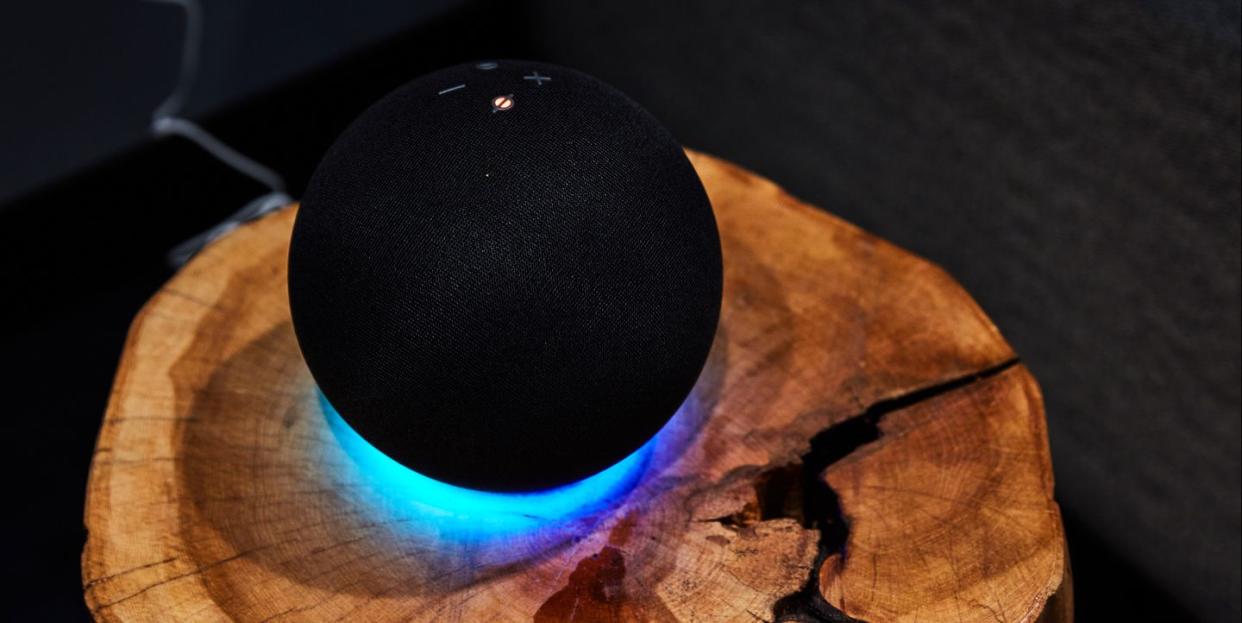
"Hearst Magazines and Yahoo may earn commission or revenue on some items through these links."
Whether you’ve just screwed in new Wi-Fi controlled light bulbs or installed the latest video doorbell camera, you may have noticed that each smart home device requires its own app for both setup and operation. Smart home hubs excel in tidying up that operation, tying all of your gadgets together so that you can access and control them from a central point. You control a hub through voice commands and touchscreens and don’t have to reach for your phone every time you want to perform an action. You can even automate and set up routines at scheduled times or by designating a trigger word. With one word or press of a button, you can kick off a series of actions. For example, telling your smart hub “goodnight” can lock your door, lower your thermostat, and turn off all of your lights.
Check out quick info below on the top five smart hubs from our testing, then scroll deeper for buying advice and full reviews of these models plus other high-ranking options.
Amazon Echo (4th Gen)
A capable smart speaker with all the power and features you need in a hub
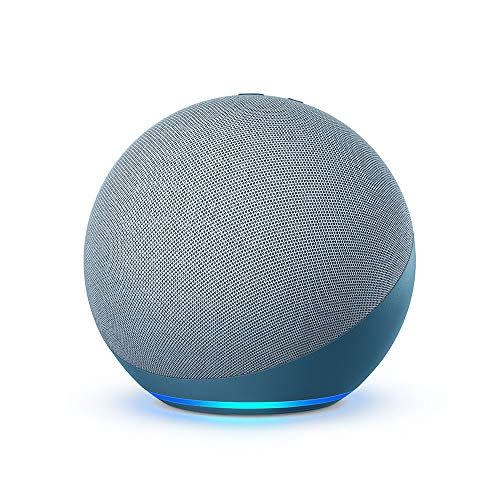
Amazon Echo (4th Gen)
$99.99
amazon.com
Samsung SmartThings Wi-Fi
Total Expert Score: 77/100
The mesh Wi-Fi system for controlling all of your connected devices
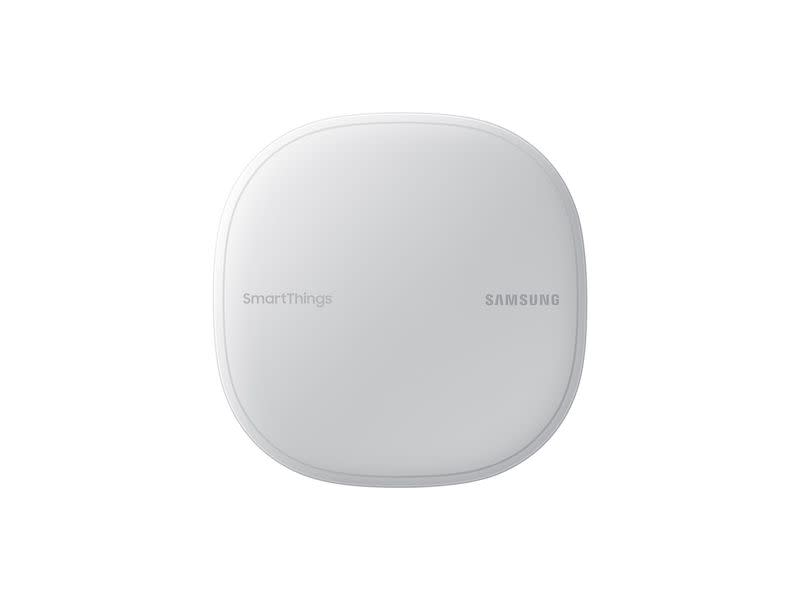
Samsung SmartThings Wi-Fi
$119.99
samsung.com
Google Nest Hub (2nd Gen)
An affordable entry into touchscreen home automation.
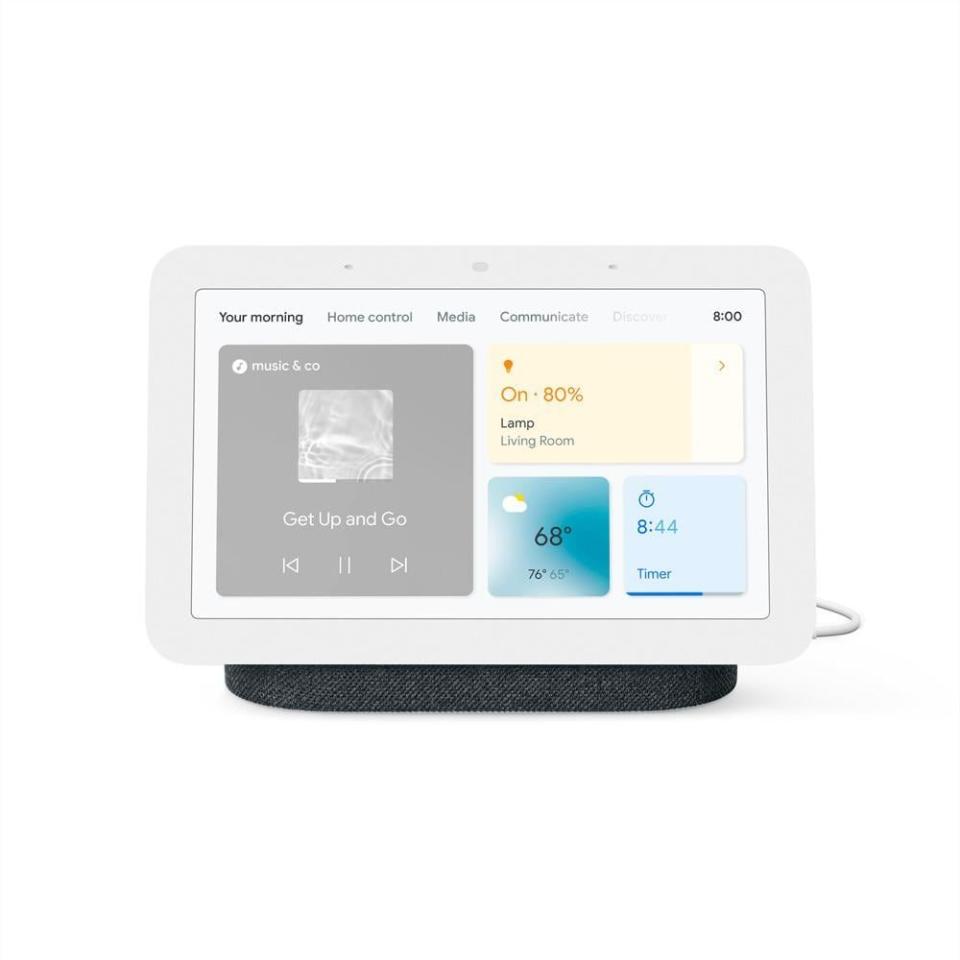
Google Nest Hub (2nd Gen)
$49.99
lowes.com
Google Nest Hub Max
Total Expert Score: 83/100
One of the best screens to add to a Google Home ecosystem

Google Nest Hub Max
$229.99
bestbuy.com
Facebook Portal TV
Turns your TV into a home control center for watching security cameras or media and video chatting.

Facebook Portal TV
$139.05
amazon.com
Google Nest Wi-Fi
Control your connected devices while broadening the reach of your home’s internet.
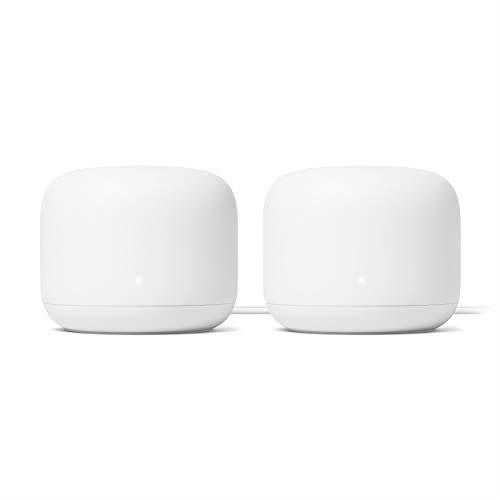
Google Nest Wi-Fi
$126.98
amazon.com
Logitech Harmony Hub
Total Expert Score: 79/100
Replaces those physical remotes for smarter home entertainment
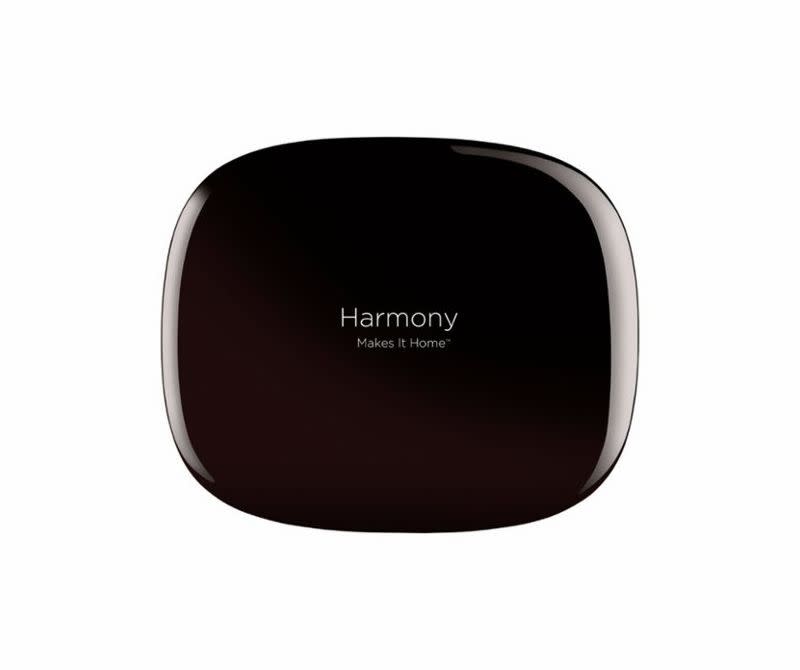
Logitech Harmony Hub
$99.99
bestbuy.com
Amazon Echo Show 10 (3rd Gen)
A booming speaker and a large rotating screen that follows you to keep you centered.
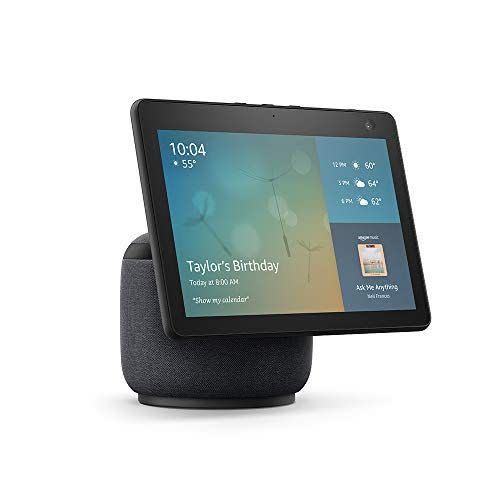
Amazon Echo Show 10 (3rd Gen)
$249.99
amazon.com
Amazon Echo Dot (4th Gen)
Total Expert Score: 87/100
An affordable entry into home automation
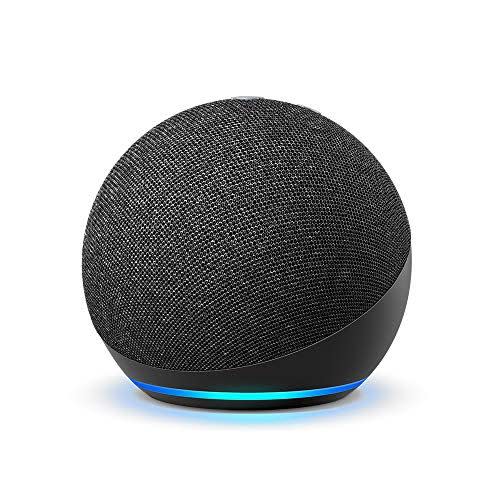
Amazon Echo Dot (4th Gen)
$49.99
amazon.com
How to Decide If You Need a Hub & Which One to Get
Because most smart devices come with an app or voice assistant for control, you may not need a smart hub. However, once you start adding many different gadgets to your smart-home ecosystem, you may want to streamline their automation by connecting them all to one device, through which you can control them all via a single app or voice assistant.
While there will likely be cross-compatibility with third-party smart-home brands, there’s no guarantee that any singular hub will work with every device. So it can help to settle on one brand’s system—such as Google Nest, Amazon Alexa, or Apple HomePod—and stick with it for the most seamless integration. Before you decide on a hub, take stock of all of your current devices (or the ones on your wishlist) to determine what other systems they’re compatible with.
One of the most important features to consider is if the hub only uses Wi-Fi and Bluetooth connectivity, or if it also supports Zigbee and Z-Wave connection. Most smart devices will connect to your Wi-Fi, but Z-Wave offers wireless mesh connection that won’t interfere with your Wi-Fi signal, and it uses less battery. Zigbee functions similarly, but its wireless connection operates at a higher frequency, meaning it might interfere with 2.4-gigahertz Wi-Fi, though it can be faster and support more devices. And be sure to check your Wi-Fi’s bandwidth to ensure it can handle more devices on the network. If not, consider investing in a new dual- or tri-band router, or even opt for a mesh Wi-Fi router with smart hub features built-in.
Speaking of, consider the form. While smart speakers have made their way into many homes, they’re just one type of smart hub. Smart displays offer a touchscreen atop a smart speaker to provide a visual dashboard. This means you can see a list of all your connected smart devices, control them with a tap, and receive picture and video context for questions you ask. Mesh Wi-Fi routers with built-in smart assistants turn each satellite base into a smart hub that boosts network signals to each room of your house while also serving as a smart speaker. Lastly, streaming devices like the Apple TV and Fire Stick serve as hubs with built-in smart assistants. You can go from watching a movie on the big screen to pulling up a live view of your doorbell camera.
Alexa Versus Google Assistant
Amazon’s Alexa and Google’s Assistant are far and away the most-used smart assistants. This comes as no surprise—these are two of the best AI helpers available, a majority of people use Amazon and Google services already, and virtually every new smart device seamlessly pairs with these ecosystems. Both Google and Amazon offer a wide lineup of first-party hubs and have even extended their presence into third-party product categories such as wearables and dash cams.

With years of feedback and research, both Alexa and Google hubs offer intuitive user interfaces with or without a screen. Creating automations or routines for either assistant takes little effort, and each app guides you with pre-created examples. Your automations can be as simple as going with the presets or as complex as using If This Then That (IFTT) open-source software to create a more complex set of actions based on things like motion detection, proximity, or temperature changes. Alexa and Google Assistant differ in various way (which we’ve gone in depth on here), but the right assistant for you boils down to the one that supports your existing smart-home equipment.
In my experience, I’ve found the Google Home app to have the clearest user interface. You simply swipe top to bottom to see information and connected devices at a glance without the need to bounce between submenus. Google makes suggestions at the top of its app if it discovers a compatible device on your network and isn’t bogged down with suggestions. On top of that, Google Assistant has a more knowledgable database and provides more thorough context when it answers your questions.
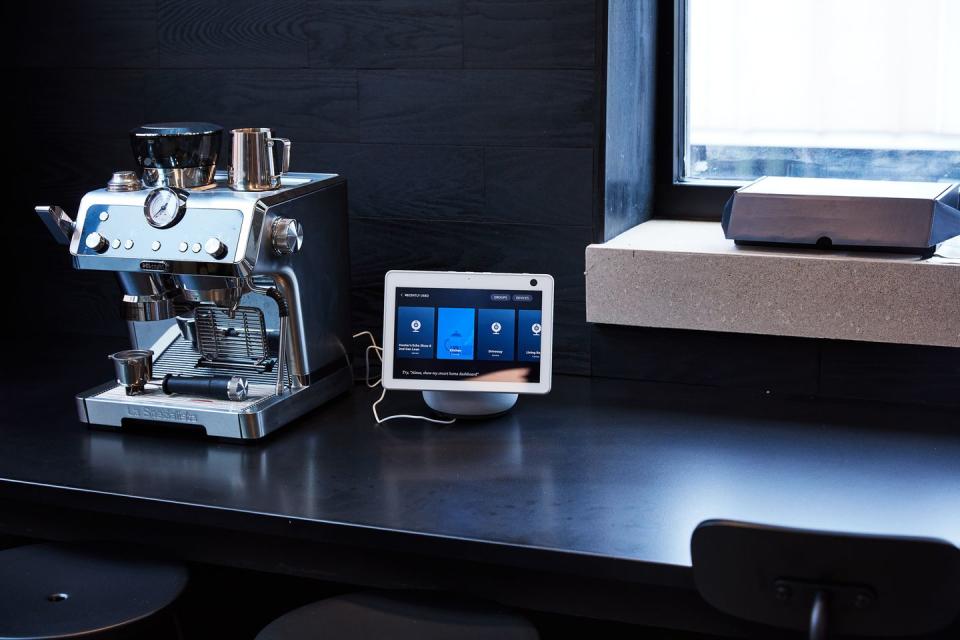
Alexa’s App offers easier access to everyday tools such as communication options, entertainment services, and devices, but the UI often gets in its own way. Important actions are pushed aside to a section vaguely labeled “More,” and visual suggestions bloat your Home feed. Alexa is integrated into far more third-party devices and focuses on features, such as Amazon Sidewalk, which extends your network to help devices work better. For example, Amazon Sidewalk-enabled hubs can provide an extended range for a Tile tracker or keep your devices online over Bluetooth and radio frequencies should your Wi-Fi go out.
How We Tested
With a lifelong passion for automating my daily routines, I’ve experimented with smart hubs since the first generation of Amazon's Echo smart speakers. And after spending the past three years professionally reviewing gadgets, I’ve accrued a collection of smart home devices that range from basic bulbs to complex Switchbots—little robots that can push buttons like those on my coffee maker and garage door. I’ve installed smart locks, video doorbells, and contact sensors, along with creating action sets and triggers around the hardware for every major smart home ecosystem. With a background in the hardware and software knowledge needed to make the most of a hub, I have a sense of what a good smart hub should offer and how it should perform.
For this test, I researched critic reviews and consumer feedback—in addition to relying on my previous experience with smart hubs—to create a pool of the most promising options available. Noting ease of use, capabilities, and reaction times of each hub over the course of a month, I ranked these devices by value and performance. Since the essential purpose of a smart home hub is to control devices, I benchmarked the time it took for each hub to trigger an action by setting each hub on the same marked point from a 5-GHz router and asking each device to turn on the same light. I recorded the speed three times to get an average from request to result. While I was also able to test the throughput speeds of the Nest Wi-Fi router, each hub is heavily experience-based. I listened to various albums on each speaker to understand sound quality, tested touchscreen capabilities, and video chatted with camera-equipped hubs. What you find below are the six best smart hubs.
—BEST SMART SPEAKER—
Amazon Echo (4th Gen)
Type: Smart speaker | Smart assistant: Alexa | Time to trigger action: 4.4 seconds
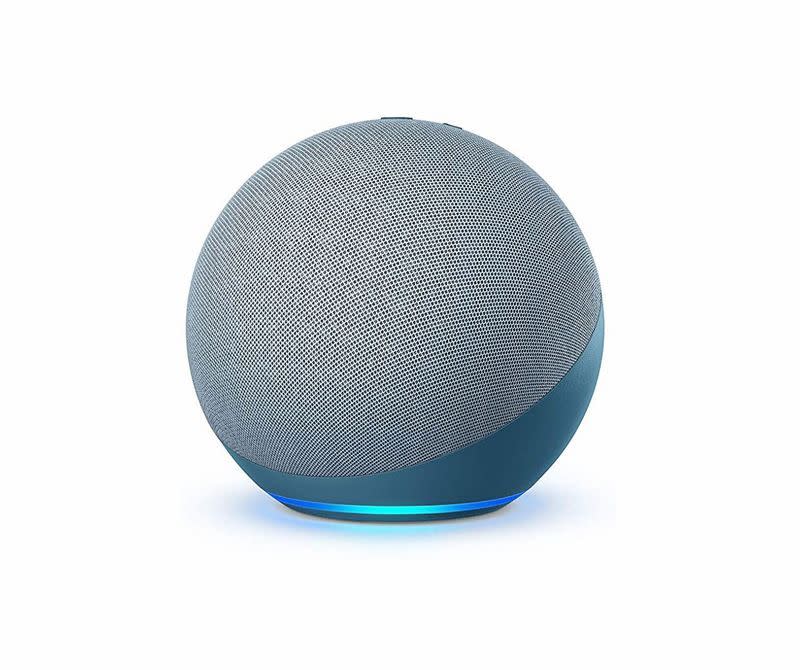
Echo (4th Gen) Smart Speaker
$99.99
amazon.com
If you want a simple audio-only assistant to play your music and follow your voice commands, the newest Echo is the best hub for you. Boasting a spherical mesh body, the fourth-generation speaker produces an all-encompassing sound that rivals much pricier models. As a hub, the Echo connects to the most smart devices thanks to the inclusion of the Zigbee device protocol, eliminating the need for separate bridges or hubs for Zigbee devices to interact with Alexa.
Setting up the Echo is painless. During testing, I simply plugged it in and opened the Alexa app to get started. While adding compatible devices isn’t as simple as opening the app and seeing them appear (like with Google’s Home app), the process is still straightforward. Activate the Alexa app and navigate to the “Device” section second from right. Select the plus icon to add a new device by type. Logging into that device’s account relinquishes full control of the device to Alexa. Immediately after setting up my smart devices, I was able to ask my Echo to lock the front door to my townhouse, turn down my lights, and set the temperature to 68 degrees. To streamline this, I used the routines button hidden in the “More” section to teach the device that when I say “Goodnight,” it should perform each of the actions I listed.
Since there’s no screen to work with or display visual information and control devices such as a doorbell camera, the Alexa app’s clunky UI on phones and tablets is especially frustrating, given how it buries important functionality in submenus to bombarding you with suggestions. Luckily I spent most of my time using just voice commands, setting and forgetting devices and routines. And in this way it’s still quite easy to control your home. In addition to the Zigbee support that Portal and Google Nest hub lineups lack, the Echo had a richer overall sound with virtually no distortion at maximum volumes. Whether I blasted Kendrick Lamar or Van Halen, vocals and instruments were distinct.
I initially worried that Alexa’s microphones wouldn’t be able to pick up my commands from a distance. Sitting in the center of my 2,500 square feet of living space, she heard me as clearly from my office loft 25 feet away on another floor as she did from my couch seven feet away. I had to repeat myself maybe five times over my one month of testing. Admittedly, Alexa triggered actions the slowest of the hubs I tested, at an average of 4.4 seconds compared to 2.9 on Google hardware and 2 flat on the HomePod Mini. While you can get a pricier Google Max or Sonos System, you won’t get the Zigbee treatment.
—BEST VALUE—
Google Nest Hub (2nd Gen)
Type: Smart display | Smart assistant: Google | Time to trigger action: 2.9 seconds

Nest (2nd Gen) Smart Hub
$49.99
lowes.com
Shifting from the Echo to the new Nest Hub trades premium sound for a capable seven-inch touchscreen. At the same price as the Echo smart speaker, the Nest Hub's display puts a new layer of home control and information at your fingertips. You can pull up cameras, adjust your thermostat, and select light colors for compatible smart bulbs. Exclusive to Google's hub lineup is the ability to Chromecast content such as Live TV or YouTube videos from your phone. While you can access apps on competing hubs, it’s handy to pick up what you're watching with minimal effort.
Unlike the Echo Show, Amazon’s competing smart display hub, the Nest Hub’s layout is more tailored to home control than entertainment. Tapping the screen shows you all of your connected devices by type and lets you view routines and check the status of things like sensors or locks. You don't have to swipe between multiple menus or open an app to see this information like on an Echo or a Portal. With both voice and touch control, pulling up security feeds, device statuses, and environmental conditions is a cinch.
The hub doesn’t have a camera built-in like an Echo Show, which I actually prefer for privacy reasons. If you like to use the camera to video chat, the Nest Hub Max is an upgraded version of the Hub with support for video calls over Google Duo. What the value Nest Hub does have is SOLI, a miniature radar chip for gesture controls and sleep tracking through Sleep Sense. Placing the Nest Hub near my bedside not only allowed me to wind down my home before bed and arm my security system but also track my sleep in a non-invasive way. The hub records my breathing disturbances, restlessness, and snoring each night and provides a detailed report at my bedside when I wake up. Compared to the highly precise wearable Oura Ring and Fitbit Charge 5, the second-generation Nest Hub is surprisingly accurate despite not having access to biometric data.
In speed tests, the Nest Hub triggered actions within 2.9 seconds, sitting in the middle of Alexa's 4.4 seconds and HomePod's 2 second average. Google shines at third-party app integration, with more action options and streamlined functions. For example, I could select from a pallet of light colors to adjust my Sengled lights, whereas the Alexa hubs could only show power and brightness levels. At under $100, the Nest Hub makes for a great value. But for a bigger screen and much better speakers, you'll have to pony up for the Nest Hub Max.
—BEST TV SMART HUB—
Portal TV
Type: Streaming device | Smart assistant: Alexa or Facebook Assistant | Time to trigger action: 4.6 seconds

Portal TV Smart Hub
$149.00
amazon.com
If Google’s seven-inch display just doesn’t do it for you, Facebook’s Portal TV connects to an HDMI port on your big screen to turn it into a capable smart hub. The Portal can access a handful of streaming services and functions as an Alexa smart speaker even when your TV is off using built-in speakers. While the onboard speakers produce a low and hollow sound, it's helpful to throw out voice commands to another interaction point in the middle of your living room. Turning your TV into a command center allows you to view security cameras, adjust smart device setting like light brightness or room temperature, and view media. You can use voice interactions through either Alexa or Facebook Assistant or the included remote for more precise control such as when you need to control light brightness.
Beyond controlling all facets of an Alexa-based smart home, the Portal TV offers one of the best video calling experiences anywhere. This is because of the cinema-trained Smart Camera system that keeps subjects front and center with smooth digital panning. I looked as great during professional calls as I did eating dinner while talking to family back home. The Echo or Nest Hub Max fails to come close to the Portal's video quality and can communicate only with devices that have the Alexa app or Google Duo calling installed. Portal can make calls to any device that has WhatsApp, Facebook Messenger, or Workspace installed.
While Portal TV works within the Alexa ecosystem for smart home control, it’s not a first-party Amazon device. That's a bit of a bummer as I was unable to make Alexa to Alexa calls or announcements, extremely helpful if you have Alexa devices littered throughout the house. While the Fire TV Stick and Apple TV can be considered hubs because they have access to virtual assistants, they require you to physically press a button to access smart assistant functionality. Both also lack cameras. Navigating the Portal TV is snappy, and Alexa performed actions within five seconds of me asking (about as fast as a first-party Amazon device but still slower than other smart assistants). If you've ever dreamed of owning a giant smart display, the Portal TV makes it possible for less cash.
—BEST MESH WI-FI ROUTER—
Google Nest Wi-Fi
Type: Mesh router | Smart assistant: Google | Time to trigger action: 2.6 seconds

Nest Wi-Fi Smart Hub
$368.98
amazon.com
As routers integrate with smart assistants for control over things like kicking off a reboot or relaying network status information, not many include a smart speaker built-in for home control. Google’s Nest Wi-Fi is one of the few, easy to set up, manage directly from the Google Home app, and place so that you can boost both network coverage and smart-assistant interaction points quickly. It took me a hair under five minutes from unboxing to complete setup of the base and relay point thanks to the Google Home app recognizing the devices and throwing the setup suggestion up top to get started.
Like the Nest Hub above, you can connect devices and set routines using the Google Home app, but there’s no screen for touch controls. As smart speakers, each point of the mesh network sounds clear but is by no means room-filling. Google’s Nest Wi-Fi consistently provided my bandwidth-hungry PlayStation 5, iPhone 13 Pro, and MacBook Pro simultaneously with 300 MBPS download speed and 30 MBPS upload without breaking a sweat, no matter where I placed the devices within my apartment.
This is one of the best routers you can buy with Google Assistant support tacked on as a bonus. You won’t want to listen to your favorite album from your relay points, but for quick access and control of your smart home from every corner of your house, the Nest Wi-Fi system delivers.
—BEST SMART DISPLAY—
Amazon Echo Show 10 (3rd Gen)
Type: Smart display | Smart assistant: Alexa | Time to trigger action: 2.6 seconds

Echo Show 10 (3rd Gen) Smart Display
$249.99
amazon.com
The new Echo Show 10 offers a spacious ten-inch touch display for controlling devices and watching media. Like our favorite smart speaker, the fourth-generation Echo, Zigbee is built directly into this new generation of the Show 10. You won’t need another bridge to communicate with things like older smart locks or Hue lights. Sound reproduction is consistent with the Echo smart speaker, but the accompanying 1280x800-pixel screen provides visuals and a touch interface. Whether I was checking to see who was at my front door or watching the latest episode of Archer on Hulu, each subject had sharp definition.
Perhaps the best update to the new Echo Show 10 is a motorized base that the display sits on. Its ability to keep the screen facing me as I cooked, ate, and washed dishes expands its usefulness compared to other smart display options. It had some minor glitches with the follow feature setting the display all the way to the right then locking in place, but this was infrequent. While the camera is serviceable for video calls, the experience doesn't come to the clarity of a Portal device. This is due to lacking color accuracy, strange proportions, and poor light handling.
Controlling devices with voice commands is as easy as with the audio-centric Echo, but the screen control makes pulling up security cameras or adjusting settings a quick two-tap process. If you don’t need the large rotating screen, the Amazon Echo Show 8 offers a fantastic value at half the price, but you lose out on Zigbee support and room-filling sound.
—BEST FOR APPLE USERS—
Apple HomePod Mini
Type: Smart speaker | Smart assistant: Siri | Time to trigger action: 2 seconds
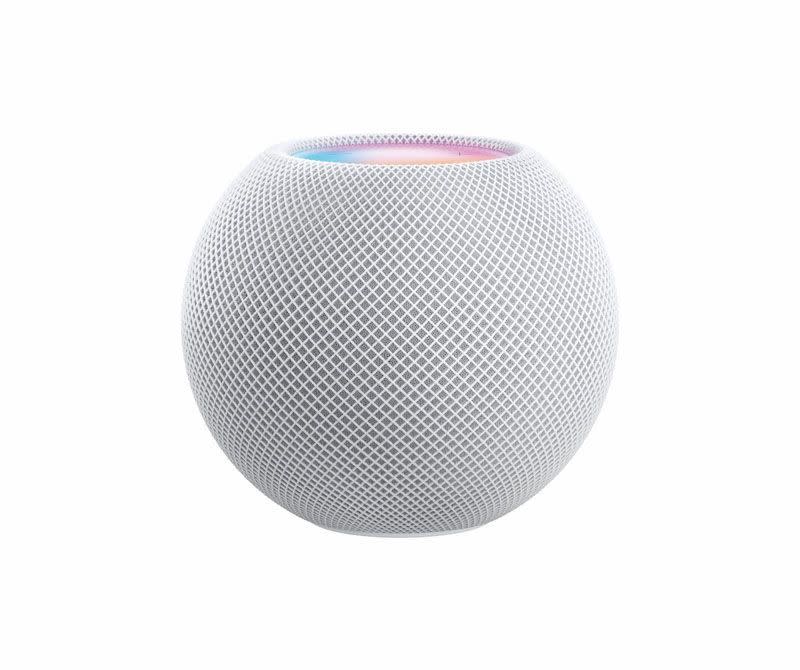
Home Pod Mini Smart Speaker
$99.99
lowes.com
Apple’s HomeKit ecosystem isn’t nearly as ubiquitous as options from Google or Amazon. That’s a shame, because not only is the Siri smart assistant arguably the most natural sounding, but the HomePod Mini that houses it is one of the fastest smart hubs I tested. You won’t really benefit from the HomePod Mini if you don’t use Apple devices, and there’s a relative lack of “Works with HomeKit” products compared to Google and Alexa options. However if you don’t need a smart display, the HomePod Mini could be a smart speaker worth looking into for Apple loyalists.
Comparable in size to the Echo’s mini version, the Dot, the HomePod Mini is a compact, round smart speaker with 360 degrees of audio reproduction that punches above its weight. From unboxing to setup, the HomePod Mini is the easiest hub to get started with. I simply plugged it in and tapped my iPhone against it to start the pairing process. Immediately after the tap, a 3D render of the HomePod showed on my phone's screen to confirm it recognized the hub. Hitting the continue button led to me scanning the pattern on the top of my HomePod to complete setup. I had access to very few compatible HomeKit devices in my home, but pairing what I did have was as easy as hitting the add device button. Immediately, my Sengled smart lights, Honeywell Lyric Thermostat, and TCL Roku TV showed up. For new purchases, you simply scan a QR code or tap the accessory with your iPhone to add it.
The HomePod Mini consistently outperformed Google and Alexa in speed for answering questions and triggering actions. Asking Siri to turn off my lights was nearly instantaneous, performing on average of one second faster than Google and 2.5 seconds than Alexa. Strictly speaking in terms of smart home control, the HomePod is a pretty great device. Speed isn’t everything, however. While I enjoyed my time using the Pod’s ultra wideband chip to tap my phone and handoff music to the speaker and pick it back up, there’s a distinct lack of audio services compatible with the smart speaker. That lackluster core functionality—playing music—immediately makes using the device less handy. Plus the HomePod isn’t as loud as an Echo. With that said, if you use Apple Music, you’re golden.
You Might Also Like

